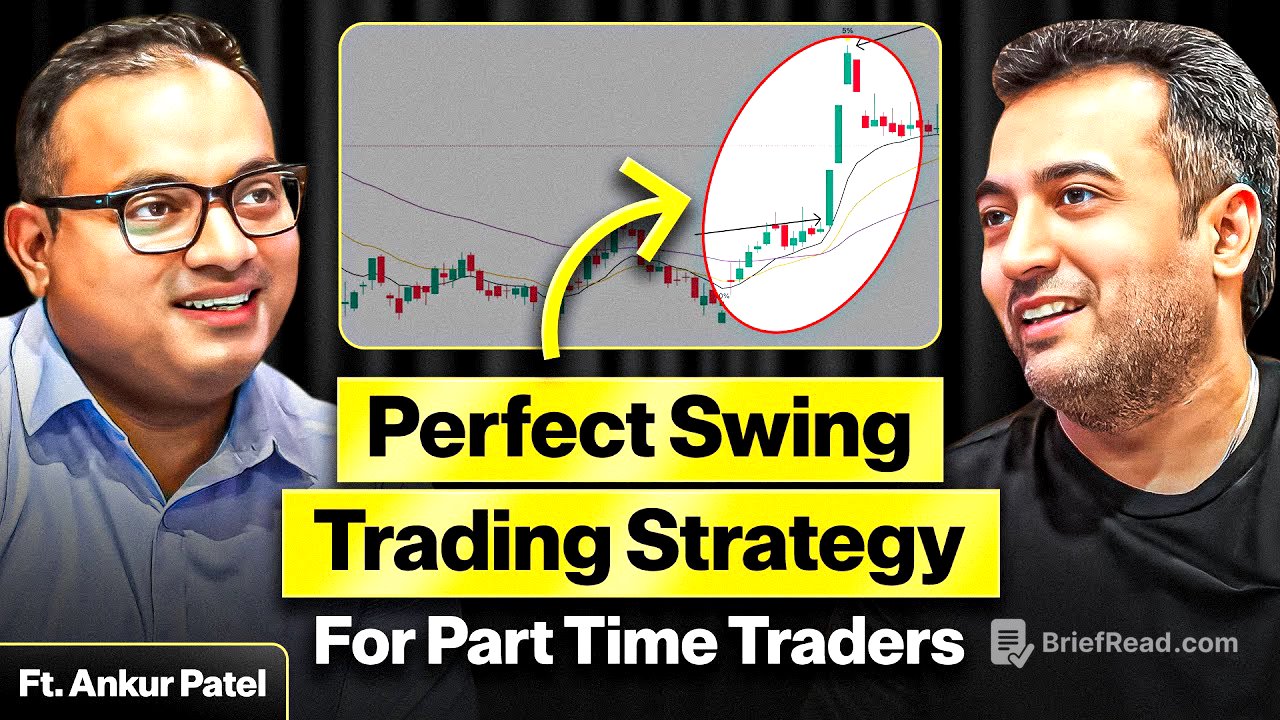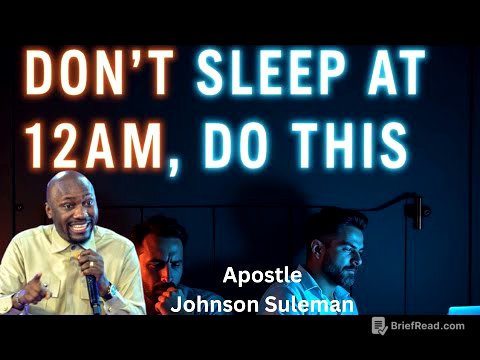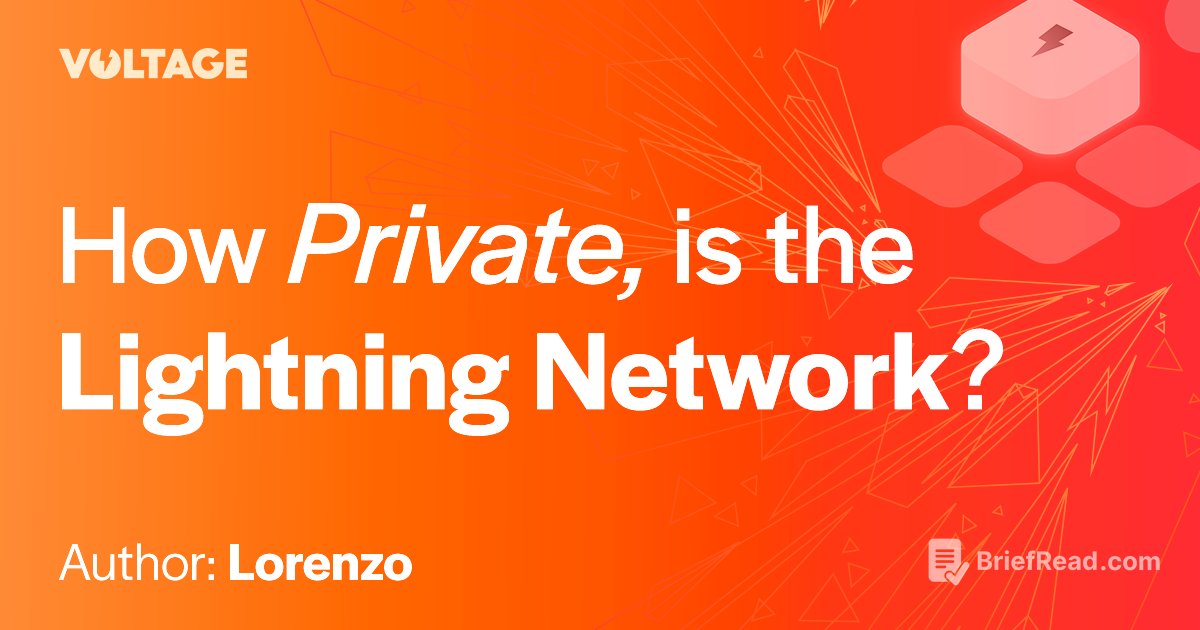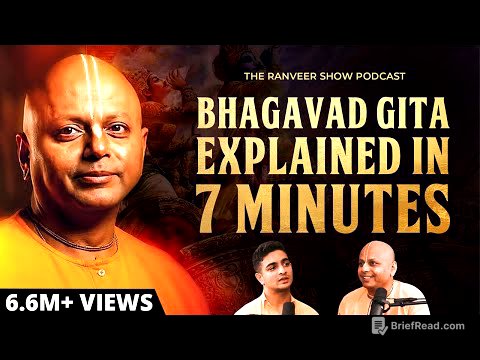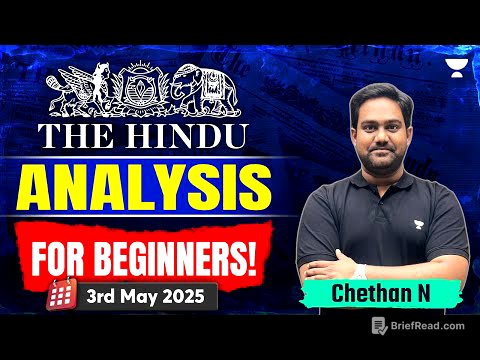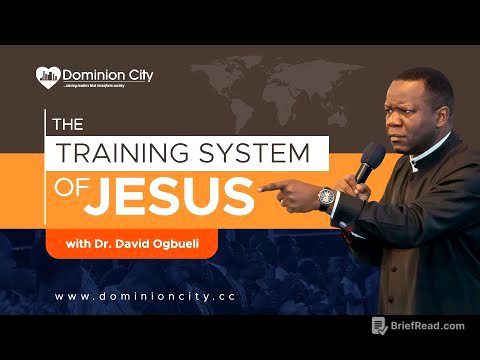TLDR;
This podcast episode features Ankur Patel discussing the Episodic Pivot (EP) swing trading method. It focuses on identifying neglected stocks that experience a sudden surge due to surprising news or earnings, leading to potential high-reward, low-risk trading opportunities. The discussion covers how to identify these stocks, entry and exit strategies, and how to adapt the method to the Indian stock market.
- Episodic Pivot (EP) is a swing trading method based on identifying neglected stocks that experience a sudden surge due to surprising news or earnings.
- Delayed EP is an adaptation of the method for the Indian market, which accounts for circuit limits and volatility.
- Key characteristics include neglected stocks, under-ownership by funds, and a strong reaction to news or earnings.
Intro [0:00]
The video introduces swing trading and momentum trading as strategies that don't require constant screen monitoring, making them ideal for part-time traders. The speaker highlights that exit strategies vary based on individual needs, and stocks traded using these methods have the potential to double or triple in value.
Preview of the podcast [0:28]
Vijay Thakkar introduces the "Master in One" podcast episode focusing on swing trading with guest Ankur Patel. The episode will cover the Episodic Pivot method, stock selection, entry and stop-loss points, target setting, and risk-reward ratios. Thakkar claims this method is logical and easy to understand.
Introduction of Guest and Podcast [1:48]
Thakkar requests viewers to like, share, and subscribe to the channel if they find the podcast informative. He then transitions to the swing trading method discussion with Ankur Patel.
Call to Action [2:28]
Thakkar welcomes Ankur Patel back to the podcast. He explains that he was impressed by a video Patel uploaded on his YouTube channel, which led to this second collaboration.
Why Ankur ji came to our podcast again? [3:47]
Thakkar explains that the logic behind the Episodic Pivot method impressed him, particularly the reason-based trading approach. He contrasts this with their previous VCP method discussion, where the underlying reasons were not as clear.
What’s today’s discussion is going to be about [4:59]
Ankur Patel explains that Episodic Pivot is based on the same underlying logic as their previous discussion, which involves waiting for range expansion and contraction. The concept originates from trader Pradeep Bonde, who was inspired by Frank Cappiello's book "Finding Next Super Stock".
Why this setup impressed Vijay ji [5:30]
Thakkar was impressed by the Episodic Pivot logic because it provides a reason for trading, unlike the previous method that relied on identifying setups without a clear rationale. This method is suitable for part-time traders as it doesn't require constant monitoring and focuses on character changes in the stock.
Who is this setup best for? [6:17]
Thakkar shares his approach to using the method, which involves identifying stocks with significant movement and examining the reasons behind the movement before adding them to a watchlist. He expresses excitement to learn more about the method from Patel.
What is Episodic Pivot, how they work and why they matter? [10:52]
Ankur Patel defines Episodic Pivot as a situation where a stock experiences a sudden surge due to factors like good earnings, change in promoters or CEO, a large order, or changes in government policy. These events create a surprise element, leading to under-ownership by fund houses and a subsequent increase in demand for the stock. The key is to observe the reaction in the stock price rather than just the news itself.
Characteristics of Episodic Pivot [11:50]
Patel introduces the concept of "Delayed EP" for the Indian market due to circuit limits and regulations like ASM and GSM. In the US market, stocks can rise significantly on the same day of good news, but Indian stocks face limitations. Therefore, traders should wait for range contraction to get a low-risk opportunity.
Why to trade this in Indian market and it’s problems [12:52]
Delayed EP is beneficial in the Indian market because it allows for smaller stop losses. Fund buying may occur over multiple days due to the 20% limit, leading to repeated big candles. The focus should be on the reaction and under-ownership by funds. Trading on the same day as the result announcement can lead to high volatility and larger stop losses.
Why delayed EP work better in Indian market [14:54]
The speaker explains the advantages of trading Episodic Pivots (EP) or Delayed Episodic Pivots (Delayed EP). These include better risk-reward ratios and reduced screen time for part-time traders. The move is typically backed by news or good earnings, providing a reason for the stock's increase.
Why to trade EP or delayed EP [15:38]
A stock that has already moved up significantly (40-60%) and is making a strong candle is not considered an episodic pivot because the news is already reflected in the price. The key element is surprise. If a stock moves 30% before earnings, it indicates that the information was already known. The stock should hold strong, indicating institutional buying.
What’s not an EP [17:24]
Patel uses CCL as an example of an Episodic Pivot. The stock was neglected and moving sideways before earnings. After earnings, the stock price jumped 17% with a massive increase in volume (R-Vol increased to 11,000%). This indicates strong interest in the stock.
Example CCL Product [20:57]
To trade this, one should wait for a small range to develop, allowing for a stop loss below the range and buying above it. Patel uses EMA lines (10, 20, and 50) to identify potential pullbacks and buying opportunities. The closer the stock comes to the 10 EMA, the better the risk-reward ratio.
Entry and stop loss [27:45]
The speaker discusses setting targets for Episodic Pivot trades. Exit strategies depend on individual needs. Active traders may exit manually, while others may trail with 20 or 50 EMA. If the company's potential is changing, holding for 100% gains is possible. The exit criteria depend on personal needs and trading style. Trailing with a moving average of 20 is recommended.
Target [31:46]
Patel shares an example of IFCI, highlighting the same criteria: a neglected stock falling from ₹90 to ₹40, then a 15% increase with high volume (R-Vol of 1131) after earnings. He uses a scanner to find such stocks and looks for low-risk opportunities with tight candles.
Example IFCI [45:20]
Ankur Patel discusses R Power as an example of Episodic Pivot. He missed the trade himself but explains how it fits the criteria. The stock was neglected before earnings, then gapped up 10% the next day with high volume. After the expansion, one should wait for small candles to form a buying opportunity.
Example R POWER [47:24]
In June 2023, a train collision led to a government scheme that benefited HBL Engineering. The stock price surged from ₹120 to ₹600. This unexpected news created an episodic moment for the stock.
Example HBL Engineering Govt. scheme [49:54]
Patel recalls trading CHENNPETRO in 2013 using the same logic. After earnings, the stock reacted with a 13% move and high R-Vol. He waited for it to move sideways around the 10 EMA before buying.
Example Chennai Petroleum [51:41]
ITD Cementation is presented as a recent example. After earnings, the stock moved up 11%. It then moved sideways, presenting a buying opportunity near the 10 EMA.
Example ITD Cementation [52:07]
Trident is mentioned as a stock to watch, with a 13% move after earnings. The potential in this stock is yet to be realised.
Example Trident [54:20]
The speaker emphasizes the importance of waiting for the right trade and highlights the difference between their first video's method and the current one. The current method is considered more straightforward and logical, with fewer conditions.
Wait for trade [55:24]
HLE Glascoat is mentioned as a stock that hit a 20% circuit after earnings. The speaker was in line to buy it but didn't get a single quantity.
HLE Glascoat [56:14]
The "cockroach effect," inspired by Mark Minervini, suggests that if a neglected stock posts a good result, it's likely to continue posting good results in the next few quarters. This can lead to increased weightage in the fund.
Cockroach Effect [56:32]
Waaree Energies is mentioned, but it failed because it had already moved 40% before the result.
Waaree Energies [57:06]
DCAL is presented as a neglected stock that is setting up. It had a small move before earnings and then an 11% move after earnings.
Example DCAL [58:03]
Vascon Engineering is another setup with a move followed by a tight range.
Example Vascone [59:17]
Just Dial is given as a negative example. The setup was similar, but the trade resulted in a stop-loss. This illustrates that losses are possible even with a good setup.
Negative Example [1:00:25]
The speaker clarifies that the intention of the podcast is to share good trading methods, not to provide recommendations. Listeners are encouraged to practice and backtest the method.
Intention of the podcast [1:01:59]
The concept can be applied to the weekly timeframe, but the entry will be later, and the stop loss will be larger. The number of trades will be less, but the gains can be significant if one has patience.
Will it work in weekly timeframe? [1:03:35]
The speaker recommends using the same screener from their last video and provides the volume shocker indicator in the description. He differentiates between stocks with results or news and those with normal breakouts.
Screener and Indicator [1:06:07]
Ankur Patel's book, "Swing Trading Simplified," is launched. The book covers the stock cycle, scanning, entry and exit strategies, and provides examples of setups.
Ankur ji’s Book [1:07:05]
The speaker encourages viewers to research and study stocks to understand the Episodic Pivot method. He emphasizes the importance of observing neglected stocks and conducting thorough research.
Final thought [1:07:34]
The speaker encourages viewers to do their own research and due diligence before applying the Episodic Pivot method. He emphasizes that the stock market requires observation and understanding of stock psychology.
Do your own research [1:08:40]
The speaker thanks Ankur Patel for sharing his knowledge and encourages viewers to subscribe to the channel, like the video, and share it with friends.
